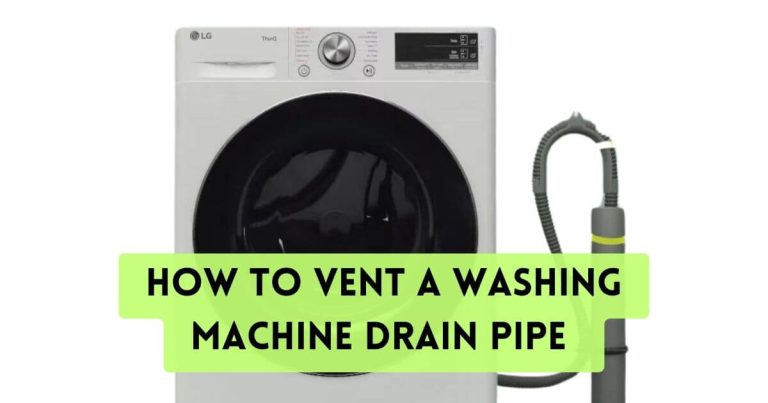Water Coming Back Up Kitchen Sink? Try This 5 Easy Steps!
The water that drains out of your kitchen should not be coming back up. If it does, this is a problem, and you need to figure out why it is happening and how to fix it.
So, what’s causing the water to come back up in my kitchen sink and how do you fix it? The water is returning to your sink due to a drain line or drain vent clog. You can fix the problem by following these steps:
- Use baking soda and vinegar slurry to dissolve clogs.
- Treat the drain with an enzyme cleaner.
- Snake the drain line and inspect the P-trap.
- Inspect the drain line for clogs and slop.
- Isolate blocked fixture or drain branch.
Once you have done this, you will need to take the necessary measures (shared here) to prevent it from happening again.
What’s Causing the Water to Come Back Up in My Kitchen Sink?
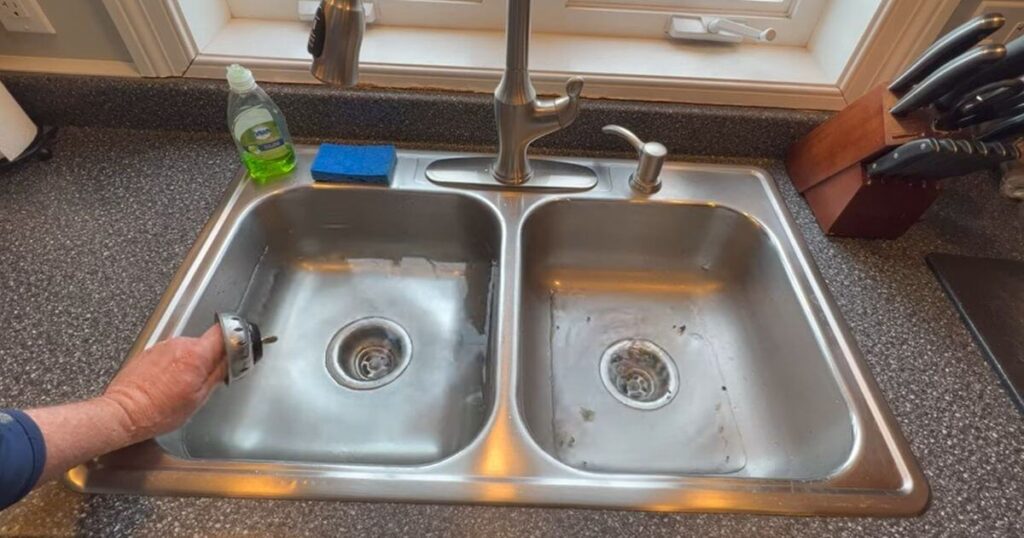
The most likely cause is a blockage or clog further down the drain line. When the water is drained, it gets trapped behind this obstruction. Gravity then causes the water to rise back up until it reaches the point of the clog.
It’s possible the clog could be located in the main drain stack vent, which is intended to allow air to escape as water drains. A blockage here could cause water to pool above it and rise back up.
In some cases, there may be a structural issue like a sag in the drain piping that causes a low spot where water can collect instead of freely draining. This trapped water then refills the sink once drainage stops.
On rare occasions, backups are caused by problems with drain or vent connections not being properly sloped or assembled to code standards. This can create areas where waste can’t fully empty out.
No matter the specific cause, the result is the same – trapped water has nowhere to go after draining except back up until it reaches the point of obstruction or change in piping structure. Identifying and removing the root blockage is necessary to resolve the issue.
How to Fix Water Coming Back Up Kitchen Sink
The experience of water coming back up kitchen sink isn’t pleasant. Typically, it is unhygienic, and fixing it as soon as possible should be a priority. But how do you fix it? Here are some of the methods that work exceptionally well.
Step 1: Use baking soda and vinegar slurry to dissolve clogs (Recommended)
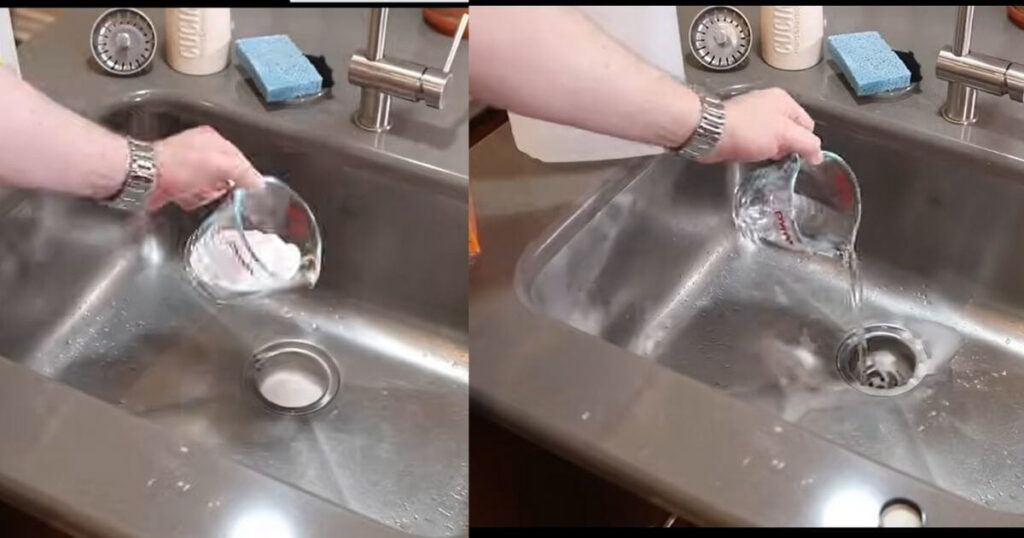
Baking soda and vinegar can effectively break up grease, soap scum, and other organic debris that cause drainage issues. The chemical reaction between baking soda and vinegar produces carbon dioxide gas that expands and breaks up clogs.
Pour 1/2 cup of baking soda down the drain, followed by 1/2 cup of white vinegar. Cover the drain so the fumes are trapped. Leave it covered for 30 minutes before flushing it with boiling water.
White vinegar alone can be used after baking soda and vinegar slurry for sinks with garbage disposals. Pour two cups of vinegar the drain and run hot water while operating the disposal.
This will help cut through any remaining debris and push it further down the line. It’s a good idea to run the disposal for at least 30 seconds to flush out materials loosened by the chemical reaction fully.
This technique works great for dissolving organic blockages near the P-trap or U-trap under the sink. The bubbling action cuts through hair, grease, food particles, and soap scum that typically accumulate in these areas over time. Repeating the treatment using fresh baking soda and vinegar mixtures can help fully clear stubborn clogs.
Step 2: Treat the drain with an enzyme cleaner
Enzyme drain cleaners work differently than abrasive liquid drain cleaners by using bacteria to break down clogs. They can pour directly into drain lines, including those with garbage disposals. Enzymes naturally break down proteins, fats, and carbohydrates that often cause drain blockages by consumption.
To use an enzyme cleaner, carefully pour the recommended amount from the bottle down each drain and run traces of hot water to circulate it. Enzymes need heat to activate, so running water helps them work more effectively.
It’s best to let the treated drains sit overnight without using water to allow maximum contact time. Commercial enzyme drain cleaners contain targeted bacteria that safely break down organic compounds that normally slip by abrasive chemicals alone.
Regular enzyme treatment as drain maintenance can help prevent slow drainage issues from developing. It’s a gentle way to digest debris before accumulating into noticeable clogs. Following use instructions carefully is important for best results.
Step 3: Snake the drain line and inspect the P-trap
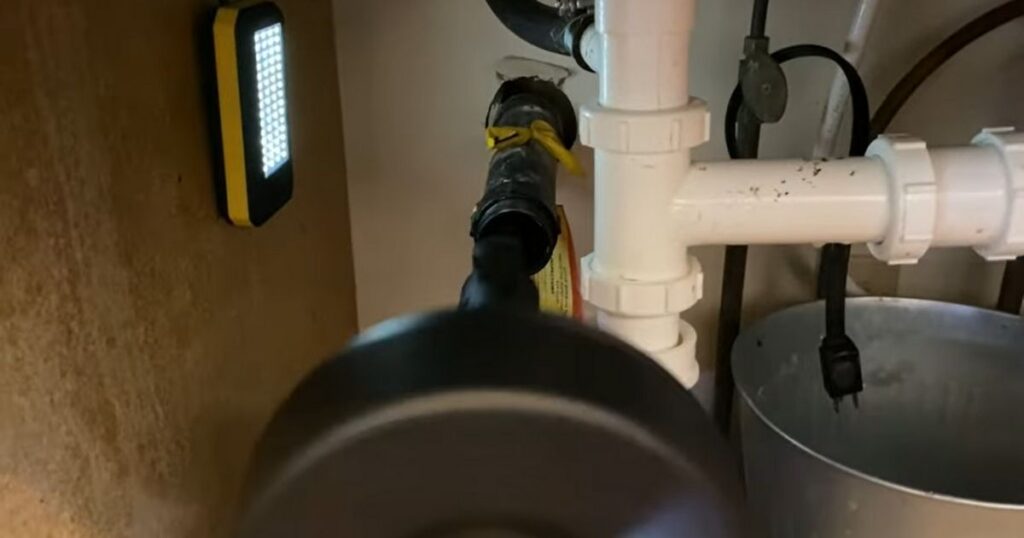
Snaking a drain line with an auger is necessary when clogs are deeper in the piping system. A manual drain auger can be inexpensive but has limitations in length and maneuverability.
For this reason, it may be better to rent a motorized snake from a home store. Motorized augers can extend over 50 feet and have a powered cable that easily navigates blockages.
Look for any signs of the kitchen sink leaking underneath. If none, remove the P-trap under the sink when snaking a drain to gain access. Inspect it for debris that can be easily cleared. Then, insert the auger cable into the drain opening, keeping it angled to follow the pipe downward.
Slowly push the cable in while turning it to dislodge clogs. Pull back periodically to check for collected muck. Rinse residues from the auger continuously. Motorized machines make this process faster.
If the cable is meeting resistance deeper in the line, maneuver it gently from side to side. Consider adjusting the angle and trying again. Persistence usually works clogs loose.
Renting equipment provides more cable length to access hard-to-reach clogs versus inexpensive manual augers. Removing the cleaned P-trap and resetting the angle also helps drainage.
Here is a video demonstrating how to snake a drain and stop water coming back up kitchen drain:
Step 4: Inspect the drain line for clogs and slop
When other remedies fail, a visual inspection of hidden drain lines is necessary. Proper piping slope and connections are critical for unobstructed flow. Check accessible piping under sinks and nearby access panels for proper downhill pitch and smooth interior surfaces. Tight joints without gaps or grooves allow debris passage.
You can also rent a sewer camera from a home store to check problem areas that are too enclosed for sight or touch. Lower the tape measure with a camera into clean-outs or loose P-traps. Video feeds pinpoint sags, tree root intrusions, and cracked pipes holding debris. Professional cameras also measure slopes electronically.
Any sections found collapsed, root-filled, or sloped incorrectly require replacement. Unless DIY-able, professionally cutting and joining new pipe sections follows plumbing codes. Temporary fixes risk future blockages rather than permanent repair. Camera inspections solve lingering drainage mysteries versus guesses.
Step 5: Isolate blocked fixture or drain branch.
When a single fixture backs up, the blockage can be isolated for targeted clearing. Start by removing the trap underneath to see if clogs are accessible. Try snaking with an auger straight down the branch or vent pipe.
If the line remains blocked, tape thick plastic bags over all other drain openings so only the problem branch fills with dyed water. Then, pour food coloring into the isolated fixture and flush. Check bagged openings for dye indication.
Drain test kits use chemical tablets to produce bubbled foaming, pinpointing the blocked branch. Once isolated, the offending pipe can be disconnected from the main for independent snaking or jetting with a power washer attachment.
Replacing corroded pipes may ultimately solve persistent issues. Isolation finds clogs before wholesale major line cleaning.
How to Prevent Water From Coming Back Up Kitchen Sink
Now that you have successfully cleared the clog causing water coming back up kitchen sink, it’s important to maintain clear drains going forward. In case you’re wondering what you can do to prevent this from happening again, here are some things you should do:
1. Use Drain Filters in Sink Drain Openings
Placing drain filters over sink openings traps particles before they enter the pipes. Hair, food scraps, and grease cling to mesh screens rather than swirling downpipes. Filters require occasional rinsing cleaning to stay effective but save major drain clearing. Fine mesh reusable filters are positioned under sink traps to avoid clogs in branch lines or further.
2. Maintain a Garbage Disposal Properly
Running hot water with the disposal and washing food down immediately after disposal use helps prevent blockages. Avoid putting large or softer food items like banana peels or artichokes into the disposal. Periodically, use ice cubes or bread crusts to clean blades and grind smaller particles smoothly down the drain. Proper maintenance keeps the unit and branch line near it from wasting lines down.
3. Pour Baking Soda Down Drains Monthly
Keeping drains clear requires frequently flushing pipes. Pour a cup of baking soda into the drain rim, followed by a kettle of boiling water to open the pores and loosen any residue. The mild abrasive cleans surfaces without scratching them like other chemicals or drain openings can harbor lingering buildup. Monthly flushes maintain smooth interior pipe walls.
4. Treat Drains with Enzyme Cleaners Bi-Weekly
Non-caustic enzyme drain cleaners digest organic matter that causes clogs. Alternating weekly between baking soda/water flushes and pouring enzyme cleaners down each drain opening keeps grease, soap scum, and hair from coagulating into blockages. Following manufacturers’ directions, the bacteria target residues that slip past abrasives or physical clearing alone.
5. Avoid Pouring Fats, Oils, and Grease (FOG) Down Drains
While convenient, pouring FOGs down drains ultimately leads to system blockages. The congealed fat sticks to surfaces, attracting other materials like hair or food. Scrape plates into the trash before rinsing or wiping with paper towels does not introduce FOG into branch lines. It may take more effort initially, but it saves major clearing costs and backups later.
Conclusion
Nuisance and frustration of water coming back up kitchen sink is not something you can assume. While the source is a clog in the drain line, fixing it as soon as possible becomes paramount. You need to find a way to get rid of the clog.
This guide has gone through all the effective and working fixes you can apply. Give them a try, and if you manage to fix the issue, share this content with friends, as they might also be having the same issue without knowing what to do.

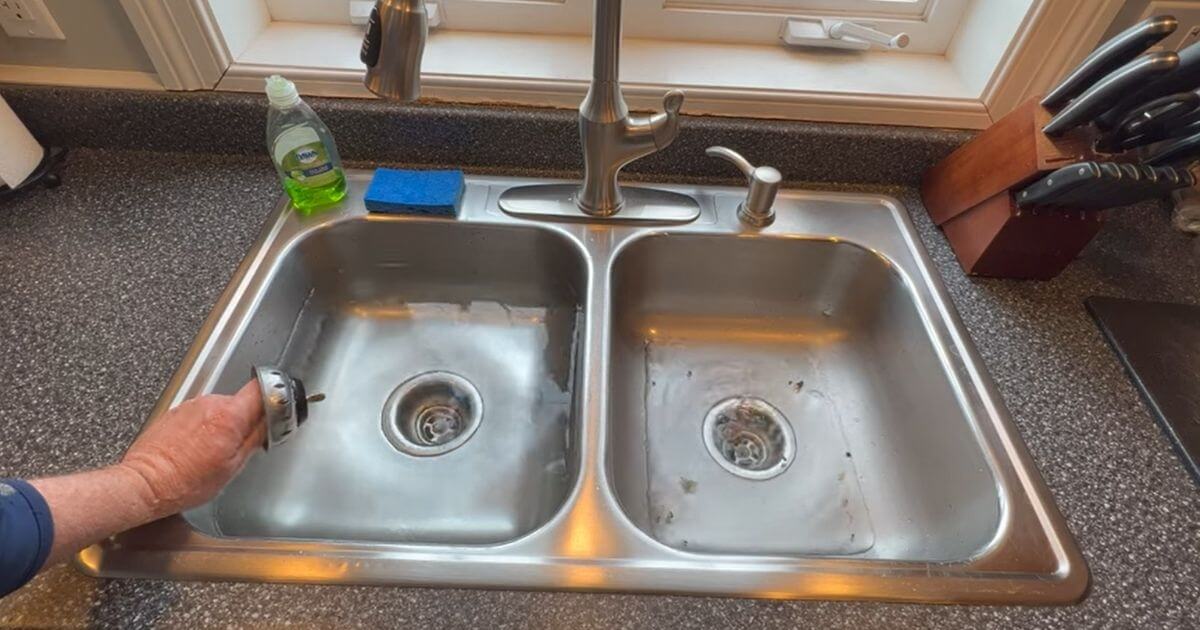
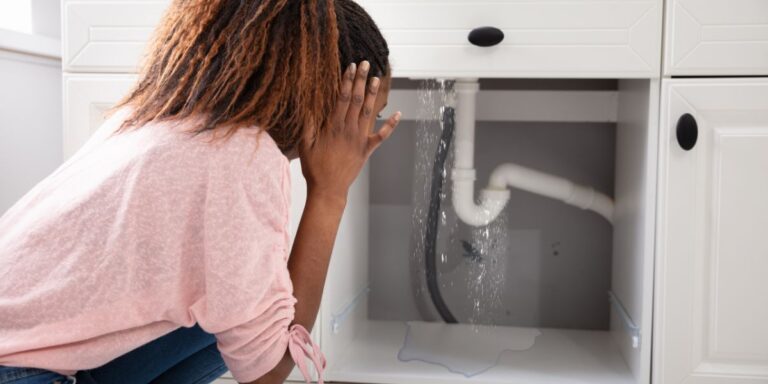


![How Do You Maintain Your Lawn? [5 Easy Steps]](https://www.homeimprovementdock.com/wp-content/uploads/2023/03/how-to-maintain-a-lawan-featured-image-768x384.jpg)
